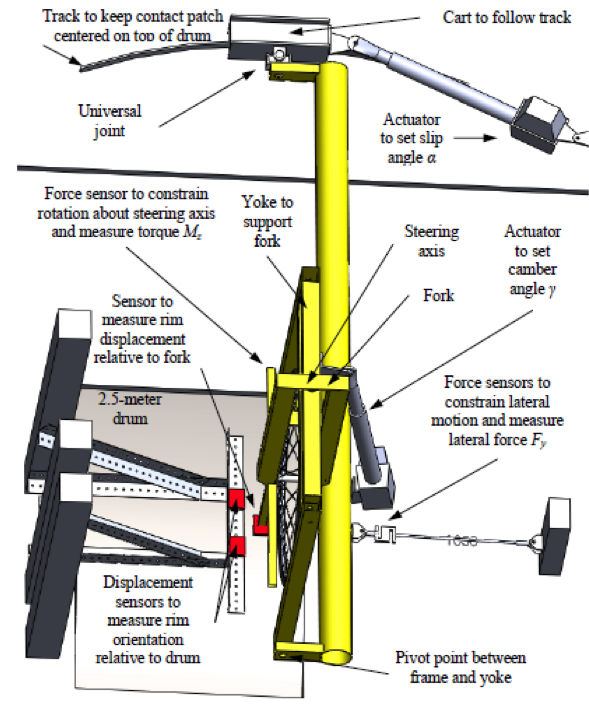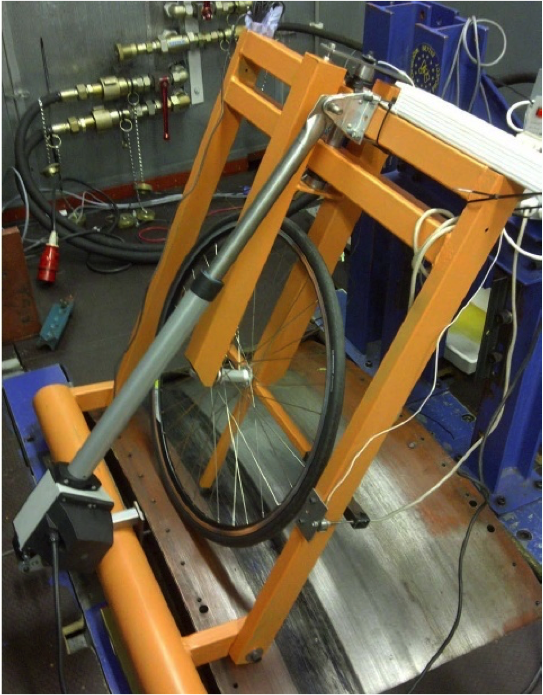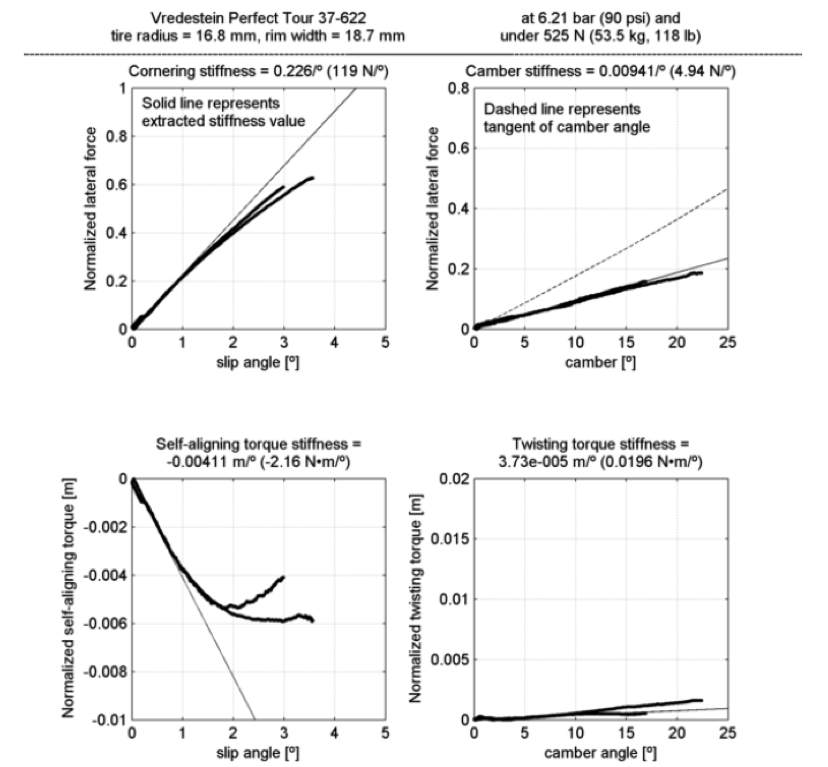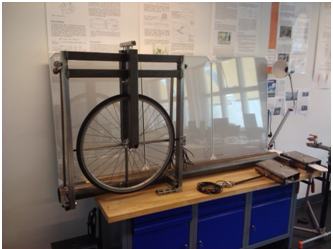Bicycle Tire Testingby |
|
|
Delft University of Technology |
The influence of tires on the stability and handling of bicycles.
It is well established that motorcycle tires, specifically the lateral force and scrub torque they generate under various slip and camber angles, has a large influence on the stability and handling of motorcycles. Initial numerical simulations suggest that the same may be true for bicycles, but little data exists, and bicycle tire manufacturers are skeptical that there will be much variation from tire to tire. At the same time, initial attempts to match experimental data of bike and rider motion to numerical models with knife edge wheels that roll without slip suggest that a more realistic tire model is necessary.
The goals of this project are:
1. Measure these properties of various bicycle tires
2. Develop a bicycle tire model based on physical characteristics that matches these data
3. Incorporate that model into a bicycle numerical simulation to investigate the influence on stability and handling that can be expected from various tires
4. Validate that influence with physical tires on physical bicycles


Progress to date:
1. Proof of concept, flat-track tire testing apparatus built and several tires tested
2. Two new tire testing apparatus designs developed based on results of first design:
a. One, at University of Wisconsin-Milwaukee, WI, USA, based on a small “flat-top chain” track that can pivot under the tire to establish a slip angle


b. One, at TUDelft, based on the large (2.5 meter diameter) drum that has already been extensively used to test motorcycle and automobile tires


In this tire measurement program a
total of 14 bicycle tires at 3 normal loadings and at 3
inflation pressures were tested. Resulting into a total of
125 pages of normalized cornering and camber stiffness
graphs, which all can be found in Andrew Dressel's PhD
thesis, entitled: Measuring and modeling the
mechanical properties of bicycle tires, PhD thesis,
The University of Wisconsin-Milwaukee, May 2013 (pdf
30.2MB).
As an example one of these results, which is for a
Vredestein Perfect Tour 37-622 on a 18.7 mm rim at 90 psi
under 525 N normal load.
 |
|
Bibliography
Andrew Erwin Dressel, 2013, Measuring and
modeling the mechanical properties of bicycle tires, PhD
thesis, The University of Wisconsin-Milwaukee, May 2013
(pdf
30.2MB)
A. Dressel and A. Rahman, Measuring
sideslip and camber characteristics of bicycle tyres,
Vehicle System Dynamics, (2011)
DOI:10.1080/00423114.2011.615408. Available at
http://dx.doi.org/10.1080/00423114.2011.615408 (pdf
782KB)
V. Cossalter, Motorcycle Dynamics, 2nd ed., Lulu, Raleigh, NC, 2006.
D.J. Cole andY.H. Khoo, Prediction of vehicle stability using a ‘back to back’ tyre test method, Int. J.Veh. Des. 26 (2001), pp. 573–582.
R.D.
Roland and Massing, A digital computer simulation of
bicycle dynamics, Tech. Rep.YA-3063-K-1, Calspan
Corporation, Buffalo, NY, 1971. Prepared for Schwinn Bicycle
Company. Available at: http://www.bicycle.tudelft.nl/schwab/Bicycle/calspan/
C.R. Kyle, Gm test of tire characteristics on a flat track slow speed steel band, Tech. Rep., General Motors, 1995. Available at http://biosport.ucdavis.edu/blog/bicycle-tire-data



